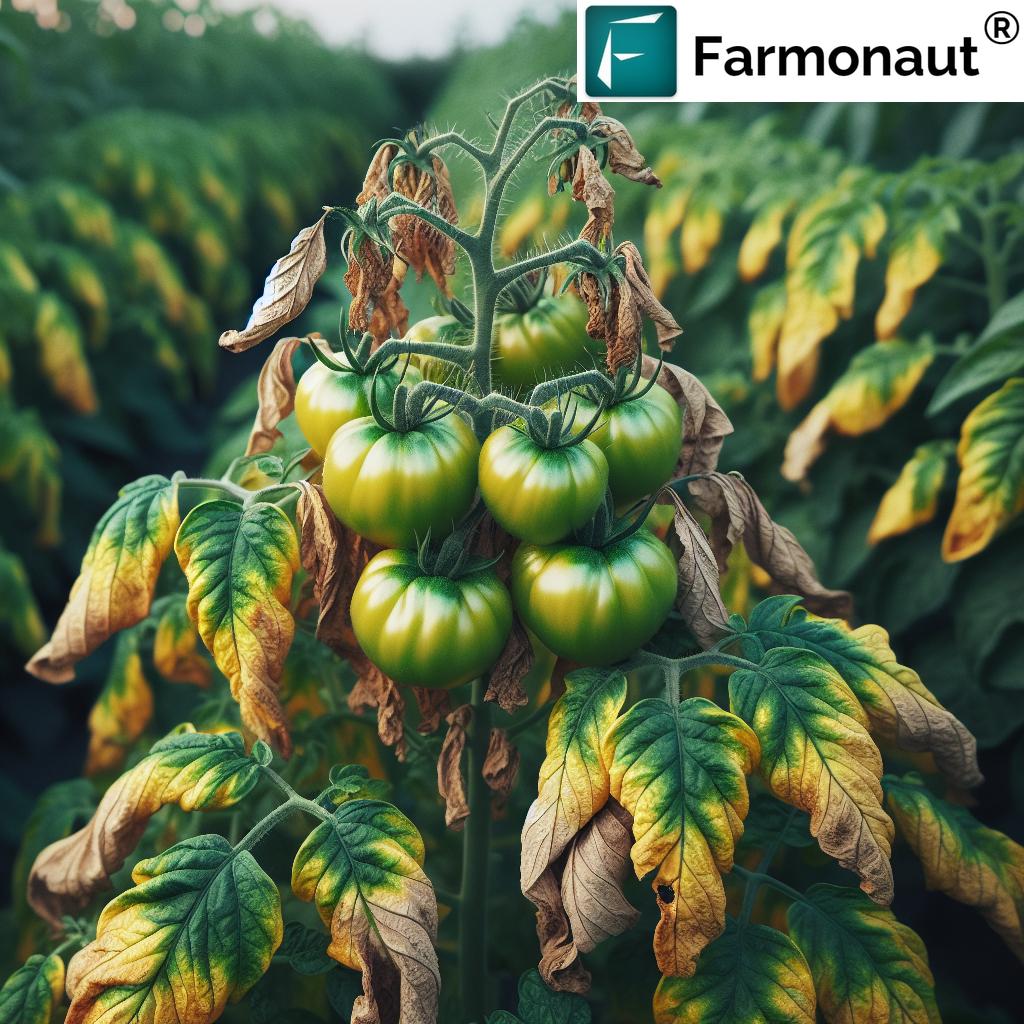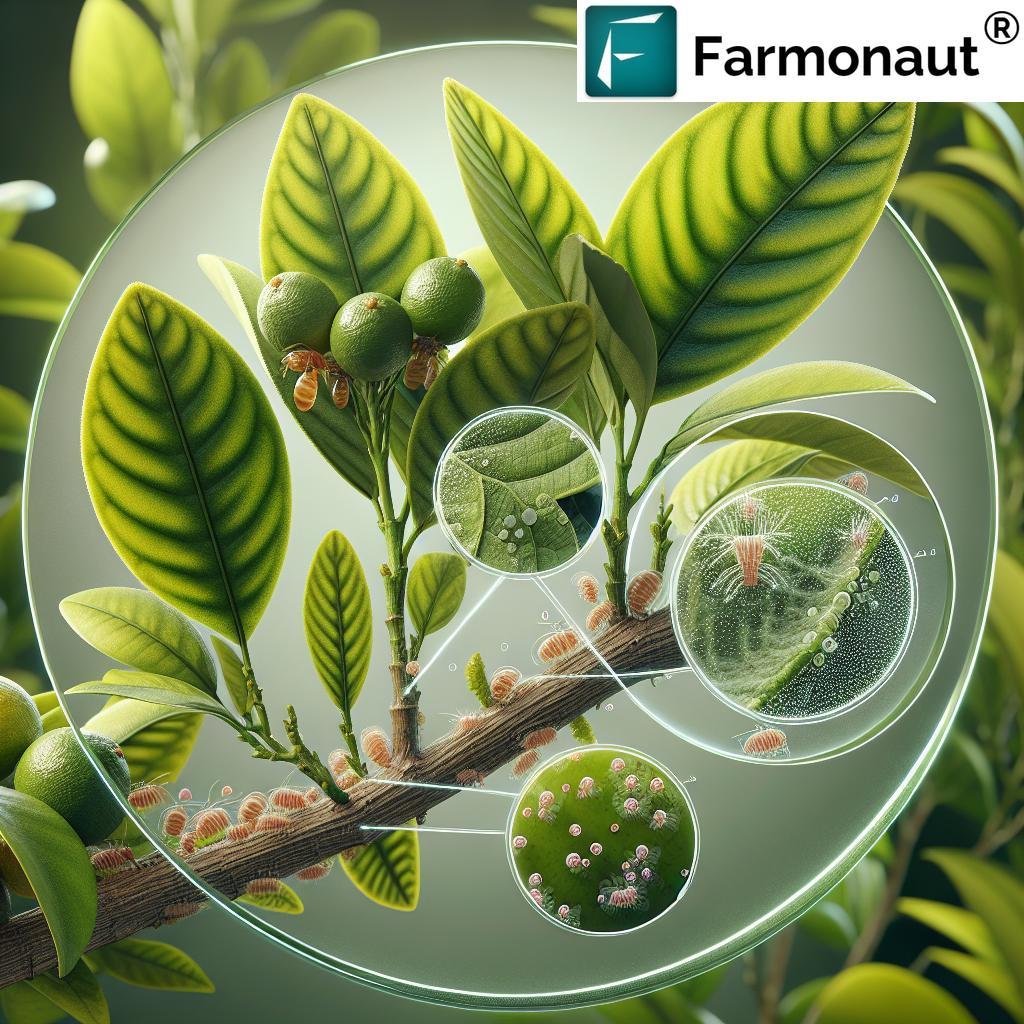Large Chicken Houses: Top Broiler & Commercial Producers 2026
Meta Description: Explore the evolution and significance of large chicken houses in modern poultry farming. Learn how advanced broiler chicken house systems drive efficiency, sustainability, and innovation for the largest commercial producers by 2026.
Table of Contents
- The Evolution and Significance of Large Chicken Houses
- Understanding Large Chicken Houses & Their Role in Poultry Farming
- Modern Design, Technology & Engineering in Broiler Chicken Houses
- Automation, Real-Time Monitoring & AI in Chicken House Management
- Environmental Impacts & Sustainability Advancements
- Top Broiler & Commercial Chicken House Producers 2026
- The Rise of Infrastructure: Meeting Global Demand Efficiently
- Farmonaut’s Role: Satellite Data & Agri-Innovation
- FAQ: Large Chicken Houses & Commercial Broiler Production
- Conclusion: The Future of Commercial Chicken Houses
“The top 5 broiler producers in 2026 are projected to house over 1.5 billion chickens annually.”
“Advanced broiler house technologies can increase poultry production efficiency by up to 40% by 2025.”
The Evolution and Significance of Large Commercial Chicken Houses in Modern Poultry Farming
The evolution of large chicken houses is one of the most impactful developments in the field of modern agriculture. As we move into 2026, the significance of these structures continues to escalate, powering a global expansion in commercial poultry supply chains, implementing new technology and management practices, and reshaping animal welfare standards. The increasing global demand for affordable, protein-rich food places the backbone of the industry on expansive, efficient, and sustainable broiler chicken houses.
These modern chicken houses represent the intersection of agricultural engineering, digital innovation, and sustainable farming. Let’s delve into how they meet supply needs, optimize resources, and outline the future growth of the largest chicken producers in 2026.
Understanding Large Chicken Houses & Their Role in Poultry Farming
Large chicken houses are not just big barns. They are expansive, climate-controlled environments designed to accommodate tens of thousands of broiler chickens in various stages of growth. These structures form the core of commercial poultry operations, delivering consistent production at scale by optimizing resource use and minimizing disease risk.
- Key Features:
- Advanced ventilation systems to regulate air flow and temperature
- Automated feeders and waterers for precise nutrition
- Biosecurity __protocols__ to prevent the introduction of pathogens
- Sophisticated lighting (often LED) to promote optimal growth rates
- Constructed using durable materials like galvanized steel and polycarbonate panels
- Capacity:
- Each house can raise up to 30,000 broilers concurrently
- Leading producers operate hundreds of houses, producing millions of birds annually
The development of commercial chicken houses has revolutionized the industry, transforming what was once a regional or traditional activity into a sophisticated, tech-driven global sector. Tyson chicken houses, as part of the largest integrated supply chains, are pivotal in this revolution.
Unlike traditional operations, these modern facilities leverage automation, rigorous biosecurity protocols, and centralized data collection to maximize efficiency and flock welfare.
The Commercial Poultry Market in 2026: A Global Perspective
- By 2025 and beyond, global demand for poultry is set to outpace all other major protein sources
- Asia, North America, and South America are driving this growth, relying on largest chicken farms to meet nutritional needs
- Top producers like Tyson Foods, Pilgrim’s Pride, and Sanderson Farms are leading the way
With rising demand, efficiency and sustainability become critical metrics. Large chicken houses and broiler systems are at the forefront, supported by state-of-the-art infrastructure and new management techniques.
Modern Design, Technology & Engineering in Broiler Chicken Houses
The transformation of broiler chicken houses into high-tech marvels has occurred through relentless advancements in engineering, automation, and digital systems. The design of these facilities is crucial, impacting not only production efficiency but also animal welfare and environmental sustainability.
- Climate Control: Sophisticated HVAC and ventilation systems maintain precise temperatures and air quality, which is critical for fast-growing broilers.
- Lighting: LED systems are calibrated to the optimal spectrum & intensity to boost feed intake and growth rates.
- Materials: Use of galvanized steel, polycarbonate panels, and corrosion-resistant coatings ensures durability and airtightness for a biosecure environment.
- Automated Feed & Water: Systems deliver precise amounts based on the flock’s real-time needs, lowering waste and improving health outcomes.
- Modular Design: Allows for rapid expansion, easy cleaning, and maintenance, reducing downtime between flocks.
- Waste Management: High-efficiency manure collection and storage to reduce environmental impact.
For large operations or government-scale monitoring, our Large-Scale Farm Management Suite provides remote field monitoring, resource allocation, and performance analysis for maximum efficiency in poultry and agricultural assets.
Smart Environmental Engineering: Feed, Water, Air, and Welfare
- Feed systems: Automated feeders synchronize with bird weights for just-in-time delivery
- Water: Waterers with filtration & recycling modules reduce water consumption by up to 25%
- Ventilation: Multi-point fans & vents actively regulate airflow to prevent ammonia buildup, disease, and heat stress
- Lighting: Programmable LED lights can enhance growth rates while conserving power
- Welfare: Floor systems designed to prevent injury, with spaces that allow more natural behaviors
These advancements are crucial for the global poultry industry, allowing the largest chicken farms to push productivity boundaries while minimizing their environmental footprint.
Automation, Real-Time Monitoring & AI in Chicken House Management
Advanced monitoring systems are fundamental for large chicken houses in 2026. Devices such as sensors and cameras collect critical data 24/7 on temperature, humidity, air quality, and bird activity levels, which are then processed through AI-powered platforms.
- Benefits of Real-Time Monitoring:
- Immediate detection of disease risks or environmental anomalies
- Feeds into automation loops, auto-adjusting ventilation, lighting, feed, and water systems in real time
- Data analytics to optimize production rates and welfare outcomes
- Automated health alerts for targeted interventions
- Farmonaut’s Role:
- Our satellite-based monitoring services support poultry managers with field-wide data overview and integration possibilities through Farmonaut APIs. This data-driven approach enhances operational efficiency and traceability.
- For technical integrations, developers can access detailed documentation at the Farmonaut API Developer Docs.
Enhancing Supply Chain Transparency with Blockchain & Traceability
As food safety and authenticity become central, traceability is now being built into commercial chicken house supply chains. Our blockchain-based traceability platform (see here) strengthens transparency—tracking every stage from breeding to processing—to create trust and reduce fraud.
“Advanced broiler house technologies can increase poultry production efficiency by up to 40% by 2025.”
Environmental Impacts & Sustainability Advancements in Large Chicken Houses
The explosion of large chicken houses brings significant environmental challenges. However, as the industry pushes toward 2026, strong sustainability standards and technological innovations are mitigating these impacts.
- Water Management:
- Advanced recycling systems dramatically reduce water consumption
- Closed-loop cleaning minimizes contamination of local water sources
- Waste Utilization:
- Manure is processed in anaerobic digesters to produce biogas and nutrient-rich fertilizer
- Reduces methane emissions and risk of groundwater pollution
- Feed Efficiency:
- Improved genetics and digital feed management have lowered the feed conversion ratio (FCR)
- Results in less land and grain used per unit of poultry meat
- Emission Monitoring:
- Environmental impact is tracked with real-time farm emission sensors—analytics help companies adjust for a lower carbon footprint
- We offer carbon footprint estimation solutions to help producers track and optimize their sustainability goals
The aggregate result: large chicken houses are rapidly evolving from being just centers of high-yield production to becoming benchmarks for environmental stewardship in modern agriculture.
For environmental impact analysis, our carbon footprinting tools provide actionable insights for compliance and sustainable production, aligning with evolving regulations worldwide.
Top Broiler & Commercial Chicken House Producers 2026
The largest chicken producers shape the trends and set benchmarks for technological advancement within the sector. Below is a concise, visually engaging overview:
This table highlights the largest chicken farm operators, stressing the importance of fully digital, sustainable systems as the industry’s gold standard.
The Rise of Infrastructure: Meeting Global Demand Efficiently
Without massive infrastructure investments in large chicken houses, producers simply could not keep up with rising demand. By 2026, tyson chicken houses and other sprawling facilities are not only the backbone of their supply chains, but are the key to scaling efficiently and resiliently.
- Vertical Integration: From breeding and hatching to growing and processing, integrated operations deliver tight quality control and traceability.
- Automation at Scale: Companies deploy hundreds of houses, each monitored and managed via a centralized interface.
- Supply Chain Strength: Vertically integrated houses minimize supply shocks, improve scheduling, and maximize market responsiveness.
- Rural Economic Impact: These commercial chicken houses generate employment for both management and local communities, acting as catalysts for broader rural development.
These systems are further strengthened by new approaches to resource input (such as Farmonaut’s satellite-powered insurance verification) which reduces risk for lenders, supporting regional growth.
For operations involving transportation and delivery of feed, chickens, and supply chain elements, our Fleet Management Tools ensure optimal routing, fuel cost reductions, and safer logistics at scale.
Farmonaut’s Role: Satellite Data & Agri-Innovation for Large Chicken Houses
As a global leader in satellite technology for agriculture, we at Farmonaut are dedicated to supporting poultry producers, farm managers, and government agencies with advanced, affordable solutions that drive productivity, optimize resources, and foster sustainability.
- Satellite-Based Monitoring: We provide real-time, multispectral satellite imagery for monitoring climate parameters, land use, and structural integrity of commercial housing, helping streamline farm management at any scale
- Jeevn AI Advisory: Our AI-driven advisory tools deliver actionable alerts, weather forecasts, and supply optimization to support decision-making for large chicken house operators
- Blockchain Traceability: All records are immutable, enhancing product provenance and reducing instances of fraud
- Resource & Environmental Management: From fleet tracking to carbon footprint reporting, our platform is built for scalable, sustainable growth
Our services are accessible via intuitive Android, iOS, and web/browser apps—and through powerful APIs for seamless integration into existing farm management systems.
For those seeking a deeper dive into how satellite data powers modern farming and infrastructure management, watch our overview videos:
Explore our Fleet Management for logistics optimization, Carbon Footprinting for sustainability, and Traceability for full supply chain monitoring.
FAQ: Large Chicken Houses & Commercial Broiler Production (2026)
What are large chicken houses and how do they improve efficiency?
Large chicken houses are expansive, climate-controlled structures designed to house tens of thousands of broiler chickens. They use modern ventilation, automated feeders, advanced lighting, and biosecurity protocols to minimize losses, improve animal welfare, and maximize growth rates, resulting in up to 40% higher efficiency compared to traditional systems.
Who operates the largest chicken farms globally?
The largest chicken producers in 2026 include Tyson Foods, Pilgrim’s Pride, Sanderson Farms, BRF S.A., and CP Foods. These companies run highly integrated supply chains with hundreds of large chicken houses, often housing millions of birds at a time.
How do broiler chicken houses address environmental and sustainability concerns?
Greenhouse gas emissions and water consumption are mitigated through anaerobic digesters, water recycling systems, reduced feed conversion ratios, and advanced waste management. Technologies like real-time carbon footprint monitoring and blockchain traceability further support sustainability goals.
What role does automation and AI play in modern commercial chicken houses?
Automation and AI drive real-time monitoring of flock health, climate conditions, feeding, and logistics. Systems can automatically adjust environmental controls, notify managers of issues, and provide analytics to improve future flock cycles.
How does Farmonaut assist poultry producers?
We provide satellite-driven monitoring, AI-based advisories, and blockchain traceability tools to help optimize production, minimize loss, ensure transparency, and comply with environmental standards—all accessible via our Android, iOS, and web platforms or through our API suite.
Conclusion: The Future of Commercial Chicken Houses
The evolution of large chicken houses epitomizes the spirit of modern agriculture: relentless innovation, continuous scaling, and deepening commitment to sustainability. Technological advancements in automation, real-time monitoring, and sustainable management systems have made commercial broiler production the cornerstone of the world’s protein supply.
The largest chicken farms, especially those operated by industry giants like Tyson Foods, are not only meeting rising demand but also driving better welfare standards and putting sustainability at the heart of their operations. From precision-engineered poultry houses and integrated supply chains to data-driven management and full supply chain traceability, the sector is ready for 2026 and beyond.
Our commitment at Farmonaut is clear: to continue empowering poultry and agricultural professionals by delivering advanced satellite and data-driven insights—fueling a future for commercial chicken houses that balances efficiency, innovation, and environmental stewardship, one farm and one data point at a time.











